June’s night sky highlights include the Full Strawberry Moon and many opportunities to spot the brightest planet, Venus, as it approaches maximum brightness for the year (around the Fourth of July). Look west after sunset! There is also a fun gathering of Mars, Venus, and a crescent Moon on June 21 that we are calling the Summer Solstice Social! Learn everything you need to know about the night sky in our calendar of sky events here.
It’s important to note that it will be much easier to see Venus now as opposed to next month. Despite its increasing brightness, the dazzling planet will drift closer towards the western horizon and may be difficult to see in July—especially for those with trees or tall buildings in the way. Don’t miss this beautiful sight this month!
Do you have your “star binoculars” yet? How about a telescope? Psst … did you know that many local libraries allow you to borrow these items? They are not required, but many sights are best seen with optical enhancement—especially this month!
Look for the telescope emoji – 🔭 – as a quick reference for sky events where we particularly recommend them.
Bookmark this page now (Press command+D on your keyboard) so you can easily refer to it over the next few weeks. If you’re interested in locating particular planets in the sky throughout the year, take a look at our visible planets guide.
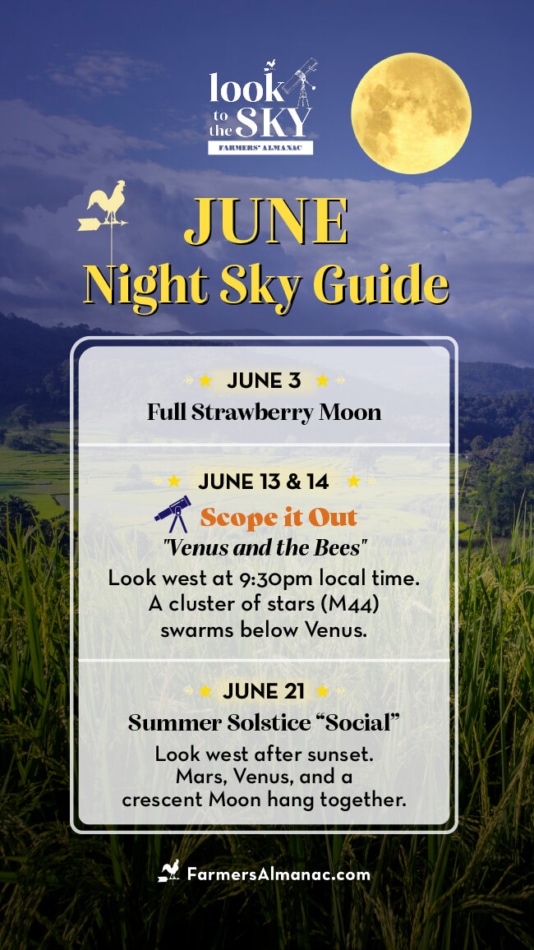
June Night Sky Guide
🔭 June 1 – Mercury, Venus, And Gemini
Mercury rises one hour before sunrise during the first half of June (for observers at mid-northern latitudes) and brightens from magnitude 0.3 to -0.7. But bear in mind that June’s dawns are long, and the sky will be quite bright by the time Mercury rises above the eastern horizon. The little planet will be tough to target unless you use binoculars. Note: Do not look towards the Sun at sunrise—only before it.
Later, in the early evening sky on this day, Venus will radiate in the western sky (and will continue to do so for the next few weeks). This evening is special as Venus forms a horizontal line with Gemini, the “Twin Stars” (Pollux and Castor), to the right.
June 3 – Full Strawberry Moon
The full Strawberry Moon reaches peak illumination at 11:42 p.m. EDT.
Get your free Strawberry Moon astrology report – tap here!
Learn more about the Strawberry Moon in the following video:
🔭 June 4 – Venus
Venus reaches greatest elongation (45 degrees east of the Sun) this evening. That means it will appear to be lit by the light of the Sun on one side—similar to how a first quarter or last quarter Moon appears. (Though this distinction is only visible through a telescope.)
Venus is beginning to decline in twilight. This means that it is getting progressively lower as the days go on. For instance, at the beginning of June, skywatchers at 40 degrees north latitude who are looking west will see the planet 25 degrees high (approximately the distance of an outstretched hand), but by the end of the month it will only be 15 degrees high. As it appears to chase after the Sun, it continually brightens. But its closeness to the horizon will make it increasingly difficult to see.
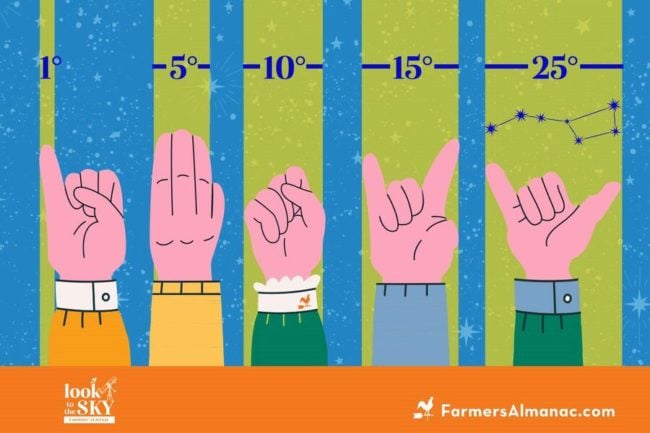
June 10 – Last Quarter Moon And Saturn
The last quarter Moon occurs at 3:31 p.m. EDT. Take note of a bright “star” shining with a sedate yellowish-white glow about a half dozen degrees to the Moon’s upper right. That’s not a star, but the planet Saturn.
The ringed world (magnitude 0.9) rises in the east-southeast around 1:30 a.m. local daylight time at the beginning of June, and around 11:30 p.m. (three hours after Sunset) at month’s end. But the best view of it comes at morning twilight’s first stirring, when Saturn hangs fairly high in the southeast. The rings are now at their most closed for the year, only 7.3 degrees from edgewise.
🔭 June 13+14 – Scope it out: “Venus and the Bees”
Look west at approximately 9:30 p.m. local time on these two nights. Venus will pass within one degree of the middle of the Beehive Star Cluster (M44).
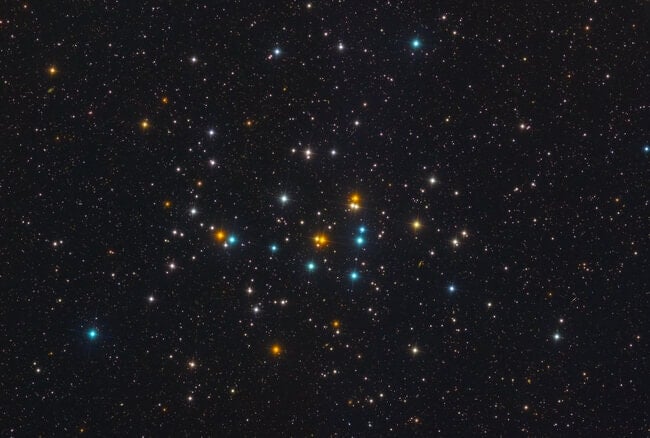
Use binoculars or a wide-field telescope. Look for M44 to the lower left of Venus on the 13th, and below it on the 14th.
Speaking of bees … Honey Bees Need Your Help! – Tap here to learn what you can do!
🔭 June 14 – Jupiter And The Crescent Moon
Look east approximately two hours before sunrise. This morning the waning crescent Moon will be floating about two degrees to Jupiter’s left.
The best time to observe it telescopically is when its higher in morning twilight.
Jupiter shines at magnitude -2.1 or -2.2 near the southern border of Aries. It rises about 2 hours before the Sun on June 1 and three and a half hours before sunup on June 30.
June 18 – New Moon “Star View” In June’s Night Sky
The “new” Moon occurs at 12:37 a.m. EDT. Learn the difference between a new Moon and a full Moon!
Stars are easier to see on the nights before and after a new Moon, so we usually suggest a constellation or one of the Brightest Stars to watch for around this time. This month, we suggest looking for Libra.
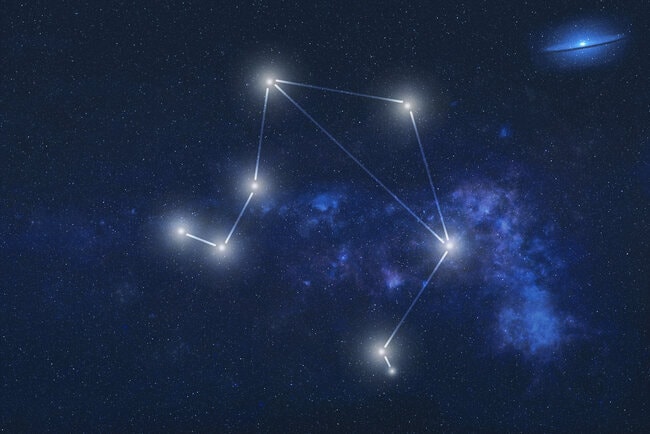
Libra is well-known in the zodiac, but is a fairly small constellation and can be tough to identify. Look south at around 10 p.m. local time and locate an orange glowing star, Antares (part of Scorpius, the Scorpion). Then look to the right (west) and you will find a small kite shape of stars. This is Libra, “The Scales.”
Fun Fact: the constellations of the zodiac appear in reverse order. For instance, libra season astrologically comes before scorpio, but scorpio comes before libra in the sky (when looking south, from left to right). Learn more about the difference between astrology and astronomy.
One early story about Libra says that the scales represented the equality of day and night. Over 3,000 years ago, the Sun entered this constellation during the fall equinox.
Interestingly, ancient star atlases depicting the adjacent constellation of Scorpius included the stars of Libra as the Scorpion’s claws. This history is preserved in the names of these stars. Zubeneschamali (at the peak of the triangle pictured above) is from the old Arabic meaning “The Northern Claw,” and Zubenelgenubi (the bottom-right in the triangle above) means “The Southern Claw.”
Today, however, based on international agreement, there is a strict division of these two constellations. Zubeneschamali, which appears whitish to some, has been described by others as possessing a “beautiful pale green” hue and is possibly the only naked-eye star that is green in color.
🔭 June 21 – Summer Solstice “Social”
The Sun stands at the solstice at 10:58 a.m. EDT. At this moment, the Sun is directly over the Tropic of Cancer. Then it begins a six-month movement southward. Summer begins astronomically in the Northern Hemisphere (and winter in the Southern).
About an hour after sunset this evening, look low toward the west to see a striking configuration of Mars, Venus, and a waxing crescent Moon.
Locate the Moon first and Venus to the lower left. Then look above and to the left for Mars, tiny and faint in comparison to Venus. From June 19-July 10 Mars undergoes a “quasi-conjunction” as Venus approaches but never quite catches up. They remain approximately a few degrees apart at their closest point (on July 1).
Mars shines at magnitude 1.7, which classes it as a 2nd-magnitude object. You’ll need binoculars to see it at all in the bright twilight even after Venus becomes obvious. Not only is Mars on the far side of its orbit as seen from Earth, it just passed aphelion, its farthest from the Sun on May 30. It is worth noting that Mars is a small planet to begin with.
June 26 – First Quarter Moon
The first quarter Moon occurs at at 3:50 a.m. EDT.
🔭 June 27-30 – Draco
Look north in the night sky to catch a sprawling star pattern that winds nearly halfway around the Little Dipper (and the north celestial pole, Polaris): Draco, the Dragon. Ancient stargazers imagined this curving stream of stars to be celestial monster. Interestingly, the star Thuban used to be the North Star about 4,500 years ago. A passage in the Great Pyramid of Giza, constructed at about that time, was aligned on that star.
Much of Draco can be hard to pick out, but his head is a distinctive naked eye grouping of four stars that’s interesting to examine through binoculars. The orange star Eltanin marks the nose of the dragon. The second brightest of the four is the yellowish-white star Rastaban. Both Eltanin and Rastaban are loose transliterations of “dragon’s head.” The star Grumium supposedly refers to “the dragon’s lower jaw.”
Finally, there is the faintest, but most interesting of the four, Nu Draconis. It’s a lovely double star, appearing in binoculars as twin white jewels. They’re about 120 light years away, and it is estimated that they are at least 240 billion miles apart—about 2,300 times the distance of the Sun to the Earth.
Join The Discussion
What sky event are you looking forward to in June’s night sky?
Share your excitement with your community here in the comments below!
Related Articles
Full Moon June 2023 – Strawberry Moon And Alternative Names

Joe Rao
Joe Rao is an esteemed astronomer who writes for Space.com, Sky & Telescope, and Natural History Magazine. Mr. Rao is a regular contributor to the Farmers' Almanacand serves as an associate lecturer for the Hayden Planetarium in New York City.

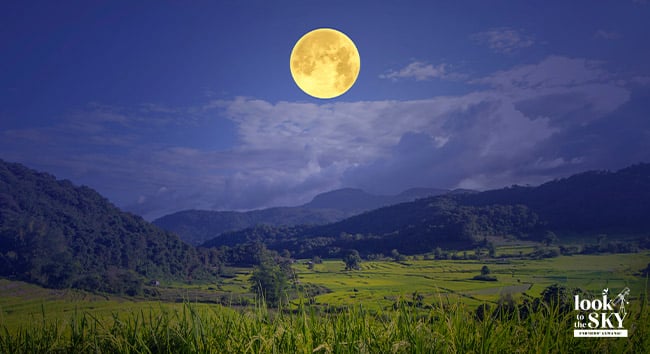
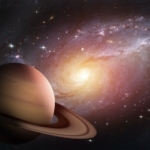

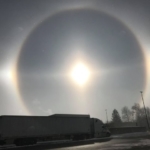
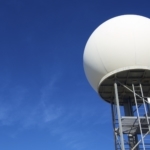
I need to find my binocs and see the Nu Draconis double star! I didn’t know we could see a really as opposed to apparently approximate stars with binoculars except in nebulas.